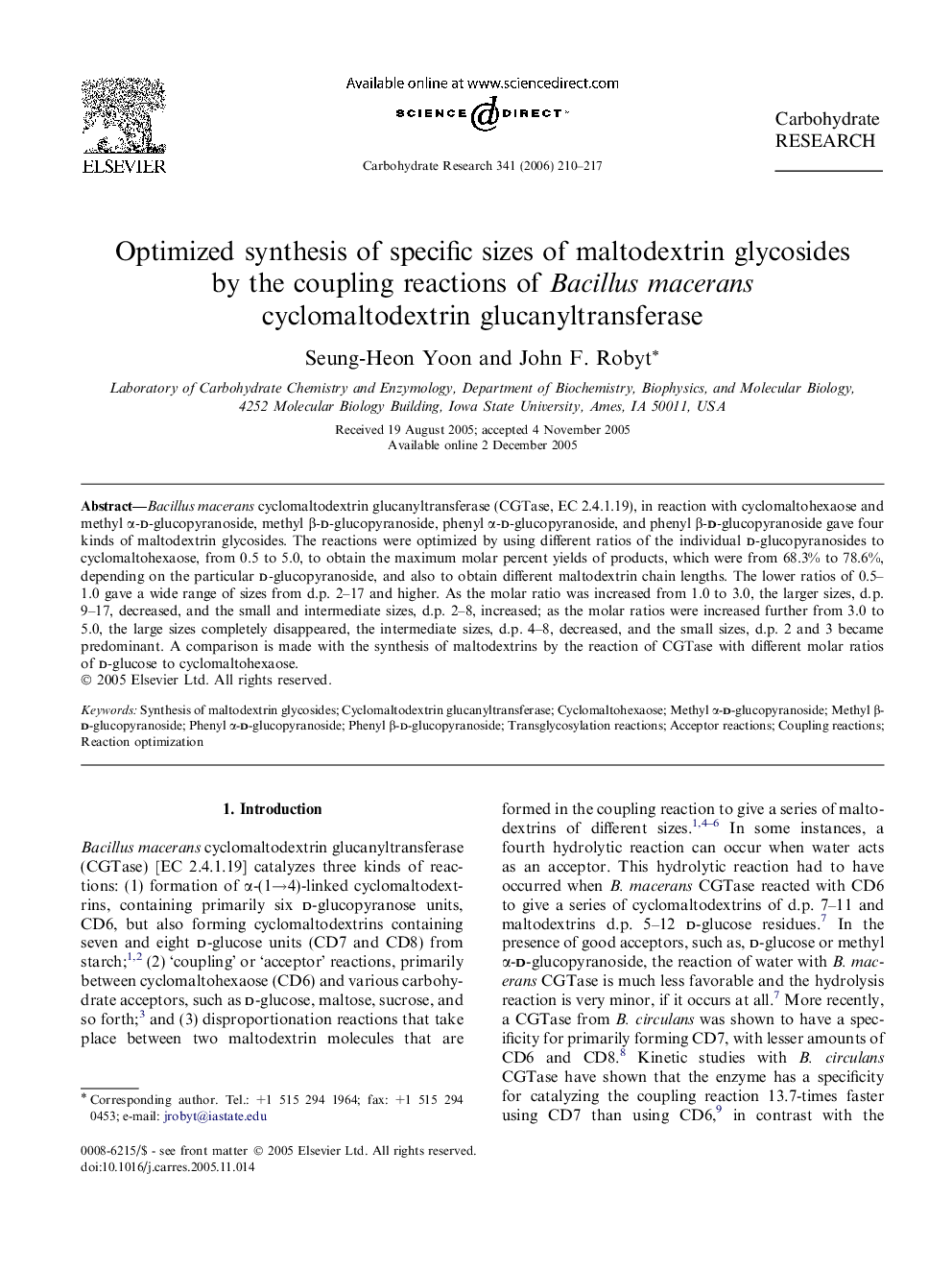| Article ID | Journal | Published Year | Pages | File Type |
|---|---|---|---|---|
| 1385974 | Carbohydrate Research | 2006 | 8 Pages |
Bacillus macerans cyclomaltodextrin glucanyltransferase (CGTase, EC 2.4.1.19), in reaction with cyclomaltohexaose and methyl α-d-glucopyranoside, methyl β-d-glucopyranoside, phenyl α-d-glucopyranoside, and phenyl β-d-glucopyranoside gave four kinds of maltodextrin glycosides. The reactions were optimized by using different ratios of the individual d-glucopyranosides to cyclomaltohexaose, from 0.5 to 5.0, to obtain the maximum molar percent yields of products, which were from 68.3% to 78.6%, depending on the particular d-glucopyranoside, and also to obtain different maltodextrin chain lengths. The lower ratios of 0.5–1.0 gave a wide range of sizes from d.p. 2–17 and higher. As the molar ratio was increased from 1.0 to 3.0, the larger sizes, d.p. 9–17, decreased, and the small and intermediate sizes, d.p. 2–8, increased; as the molar ratios were increased further from 3.0 to 5.0, the large sizes completely disappeared, the intermediate sizes, d.p. 4–8, decreased, and the small sizes, d.p. 2 and 3 became predominant. A comparison is made with the synthesis of maltodextrins by the reaction of CGTase with different molar ratios of d-glucose to cyclomaltohexaose.
Graphical abstractFigure optionsDownload full-size imageDownload as PowerPoint slide
